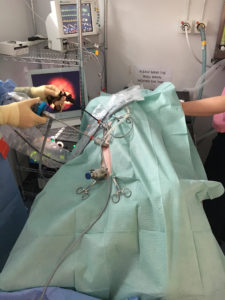 Dental disease is extremely common in our pets but why does it develop? This is likely due to a combination of reasons, including:
Dental disease is extremely common in our pets but why does it develop? This is likely due to a combination of reasons, including:
Conformation of your pet’s mouth; smaller breed dogs and breeds with short muzzles have the same amount of teeth in a smaller space. This can be described as ‘overcrowding’. This results in trapped food and increased risk of tartar build up.
Diet; dry diets help to abrase the surface of your pets teeth helping to keep them clean. Your pet may be more likely to develop dental disease if fed solely on a wet diet. That being said, sometimes this doesn’t make much impact if you pet’s food barely touches the sides in the first place!
Species specific dental conditions. Cats are prone to developing resorptive changes in their teeth. The exact reason for this is unclear but the condition is painful and teeth can eventually become fused to the surrounding bone.
Oral masses. Growth of benign or malignant masses in the oral cavity can encroach on surrounding teeth causing them to become wobbly or food can build up in between them causing decay.
Why is it important to perform dental procedures for our pets?
- To improve their oral comfort therefore quality of life
- By removing tartar we reduce the risk of subsequent gingivitis, gum recession, root exposure and ultimately tooth extractions
- By removing those already diseased teeth we reduce the risk of tooth root abscess and oral pain
- There is the added benefit of better breath too!
What does a dental involve?
A dental involves a general anaesthetic and close inspection of each individual tooth. We also have dental x-ray facilities which means we can x-ray tooth roots if needed. Teeth requiring removal will be carefully extracted and those remaining will be descaled and polished. Your pet will come home with pain relief after this procedure and often antibiotics if extractions have been performed. Dogs and cats do remarkably well after their dental procedures and many owners say what an impact it has on their quality of life.
However, we find lots of our clients worry about performing dentals on their animals so we hope we can reassure and clarify some common worries for you.
Generally, most animals requiring dental surgery are older which means people worry more about the general anaesthetic. As part of the decision to perform a dental we will take a thorough history and perform a thorough exam to identify any concurrent problems that may impact on the general anaesthetic. We also think that performing a dental sooner rather than later is best; actively deciding to address the teeth whilst your pet is fit and healthy is safer than waiting for them to become an issue.
People are also concerned about how many teeth will be removed. We will only ever take teeth out that require extraction. However, it is impossible to predict the number until we remove all of the tartar and carefully examine every aspect of each tooth. In some cases the majority of teeth need to be removed. Although disconcerting to us, this is the best thing for your pet and they will feel much more comfortable. Both cats and dogs cope very well with only a few to no teeth remaining and many are still able to eat a dry diet!
What next?
If you would like your pet’s teeth assessing for dental disease then our nurses are happy to look in your pet’s mouth in a free nurse consultation. However, if you have other concerns about your pet at the time then a vet consultation is recommended.
Please watch over the coming weeks for some ‘before and after’ examples. Also watch out for ‘Dentals part 2: preventative health care-what and how?’.


